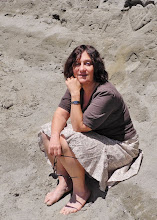 Legend has it, that two first cousin Kranzbergs settled in America during the initial wave of immigration from Russia in the late 19th century. One Kranzberg chose to drop anchor in St. Louis, as it was one of the most impressive cities of that time, and the other cousin settled in Boston. From those Kranzbergs of humble origins, butchers and grocers—from the world of Sholem Aleichem's Tevye the Milkman— sprouted an entire clan of prominent rabbis, scholars, professors, artists and businessmen. After closer inspection, I believe the St. Louis Kranzberg family possesses the higher collective I.Q. In 1996, eager to learn of my heritage, I accepted an invitation, along with my sister Susan, to Maurice Kranzberg's 85th birthday celebration in St. Louis. It was then I met the whole mishpokhe, and found myself enchanted by the other Kranzberg's hospitality, intellect, and devotion to the Jewish tradition of Tzedakah. In that city today, Kenneth and Nancy Kranzberg are benefactors of the Kranzberg Arts Center, Kranzberg Exhibition Series at Laumeier Sculpture Park and the Kenneth and Nancy Kranzberg Art & Architecture Library at Washington University.
Legend has it, that two first cousin Kranzbergs settled in America during the initial wave of immigration from Russia in the late 19th century. One Kranzberg chose to drop anchor in St. Louis, as it was one of the most impressive cities of that time, and the other cousin settled in Boston. From those Kranzbergs of humble origins, butchers and grocers—from the world of Sholem Aleichem's Tevye the Milkman— sprouted an entire clan of prominent rabbis, scholars, professors, artists and businessmen. After closer inspection, I believe the St. Louis Kranzberg family possesses the higher collective I.Q. In 1996, eager to learn of my heritage, I accepted an invitation, along with my sister Susan, to Maurice Kranzberg's 85th birthday celebration in St. Louis. It was then I met the whole mishpokhe, and found myself enchanted by the other Kranzberg's hospitality, intellect, and devotion to the Jewish tradition of Tzedakah. In that city today, Kenneth and Nancy Kranzberg are benefactors of the Kranzberg Arts Center, Kranzberg Exhibition Series at Laumeier Sculpture Park and the Kenneth and Nancy Kranzberg Art & Architecture Library at Washington University.Benefactors come in all varieties: the good, the bad, and the ugly. In my former role, as concertmaster, I met a cast of characters, enough to fill an entire novel. There was the appalling woman with an agenda of disposing of the Northwest Chamber Orchestra's principal conductor. Another NWCO benefactor requested a song in 4/4 (oh, but that's harmless) for a donor dinner, and then asked, "What does 4/4 mean, anyway?" But the benefactor who stole the show as far as reprehensible behavior was Mr. X, a local patron for the arts. After a fund-raising event where I performed on a tired-sounding, astronomically over-priced Stradivarius, this Mr. X. raised himself from his chair—breath stinking of liquor—and thrust his hoary hand down the front of my low-cut, black dress to deposit $200 into my bra. Cash.
No, dear readers, I didn't keep the money. I hadn't been sent by an escort service, although Mr. X, in his drunken stupor might have mistaken me for another violinist.
Mordecai Kranzberg (right) with three of his many sons, 1900

No comments:
Post a Comment